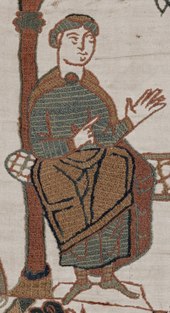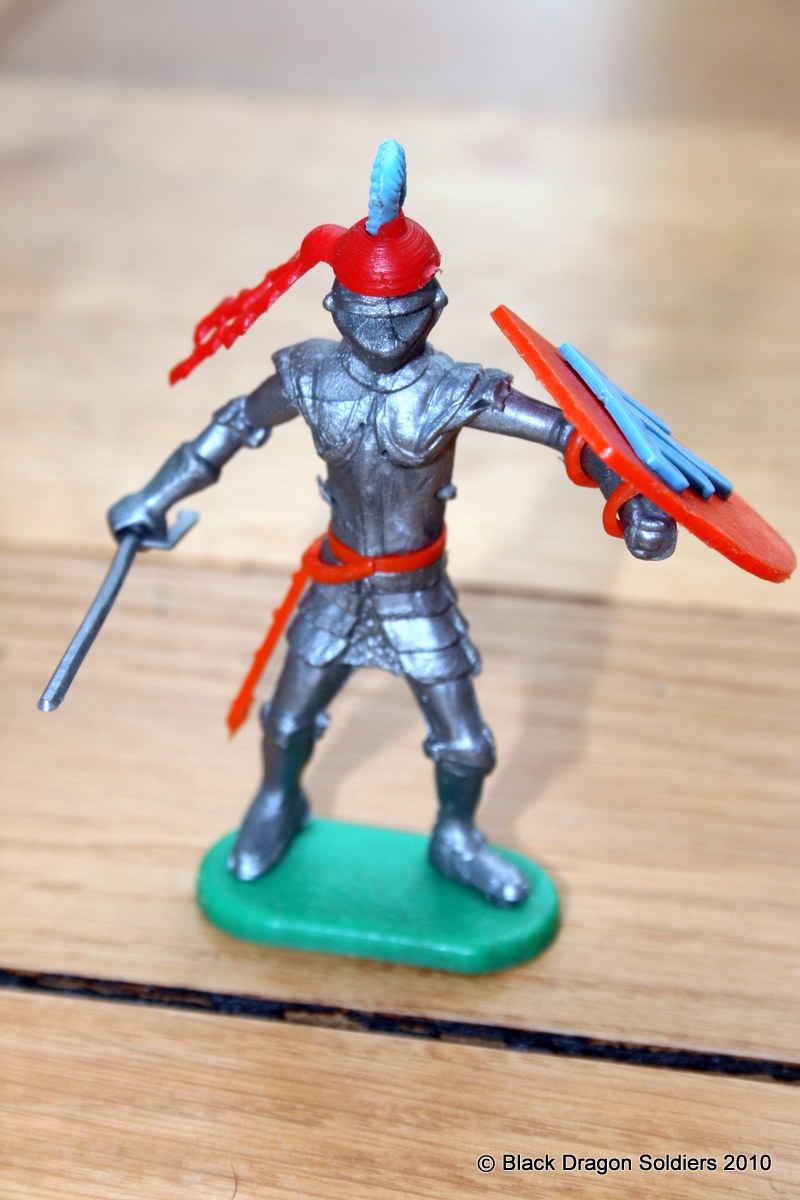 both built within the old Roman city walls,
both built within the old Roman city walls,  they have resisted siege and destruction for over 900 years.
they have resisted siege and destruction for over 900 years.The first castle was raised here at the time of the Norman Conquest and is mentioned in the Domesday Book in 1086. This early fortification was rebuilt for King William Rufus
 between 1087-89 by Gundulf, Bishop of Rochester, and was one of the earliest castles in this country to be fortified in stone.
between 1087-89 by Gundulf, Bishop of Rochester, and was one of the earliest castles in this country to be fortified in stone.  Much of the documentation on Rochester survives, along with the many dramatic details of its military history - which saw the castle suffer three major sieges within two centuries of its foundation.
Much of the documentation on Rochester survives, along with the many dramatic details of its military history - which saw the castle suffer three major sieges within two centuries of its foundation.
Early records suggest that after the conquest, both the City and Castle of Rochester were awarded to the half-brother of King William, Odo, Bishop of Bayeux.
 The first Norman fortification built here would have been a standard motte
The first Norman fortification built here would have been a standard motte and bailey design of timber and earth, and would have almost certainly been erected very soon after the conquest in 1066. Before his disgrace and imprisonment in 1082, Odo was a dominant figure in Norman England and was awarded the earldom of Kent by William after the conquest.
and bailey design of timber and earth, and would have almost certainly been erected very soon after the conquest in 1066. Before his disgrace and imprisonment in 1082, Odo was a dominant figure in Norman England and was awarded the earldom of Kent by William after the conquest.
He is also said to have been responsible for the making of the Bayeux Tapestry, yet it was Odo who was the principal cause of the first great siege of Rochester Castle in 1088,Curiously the 1088 siege was not the result of an Anglo-Saxon uprising, but rather a dispute between the Normans themselves: after William’s death in 1087, his Anglo-Norman kingdom was split between his sons, and his barons, unhappy about the division, rose up against the new king of England, William II Rufus.
The castle that was disputed in Rochester in 1088 lacked the keep but it would have had the bank and ditch and stone curtain wall that survives today (though with substantial later additions). This outer wall that encloses the bailey made use of a corner angle of the former Roman wall of the city, along with the bank of the river Medway. Gundulf, bishop of Rochester, was responsible for its construction, as well as starting work on the adjacent Cathedral.
This Gundu lf was renowned as a skilled builder, and indeed he was involved in the work on William’s strong keep in London, the White Tower. Though Gundulf was long dead by the time work started on Rochester’s keep, there is a similarity in design and style between the two. Indeed the tower of Rochester would probably have been whitewashed in similar style to its sibling in London. Rebels Siezed Rochester and control of Rochester bridge,On hearing this King John came from Dover where he had been staying.the King's men managed to gain control of the Bridge and then they had to Siege the Castle.It took about 2 months to capture the Castle.It is thought King John may have set up his command headquarters on Boley hill during this time.the forces erected 5 great Stone throwing engines to pound the defences as well as small-arms of Bows and Arrows.However this wasn't enough and King John's men finally managed to gain entry into the Bailey (Castle grounds) by undermining the Castle wall.Meanwhile The defenders retreated into the Keep.After King William the Bastard died in 1087, a large section of the Norman Nobles in England were unhappy at the division of Normandy which resulted from the Conqueror's disposal of his dominions at his death. These Nobles ( the Conqueror's two half-brothers Odo and Robert, Count of Mortain, Geoffrey de Mowbray, Bishop of Coutances, his nephew Robert de Mowbray, earl of Northumberland, Roger de Montgomery, earl of Shrewsbury, Gilbert fitz Richard of Clare and many others) supported the claims of William's elder son Robert, then Duke of Normandy, against William Rufus, the younger son who had succeeded to the Kingdom of England.
lf was renowned as a skilled builder, and indeed he was involved in the work on William’s strong keep in London, the White Tower. Though Gundulf was long dead by the time work started on Rochester’s keep, there is a similarity in design and style between the two. Indeed the tower of Rochester would probably have been whitewashed in similar style to its sibling in London. Rebels Siezed Rochester and control of Rochester bridge,On hearing this King John came from Dover where he had been staying.the King's men managed to gain control of the Bridge and then they had to Siege the Castle.It took about 2 months to capture the Castle.It is thought King John may have set up his command headquarters on Boley hill during this time.the forces erected 5 great Stone throwing engines to pound the defences as well as small-arms of Bows and Arrows.However this wasn't enough and King John's men finally managed to gain entry into the Bailey (Castle grounds) by undermining the Castle wall.Meanwhile The defenders retreated into the Keep.After King William the Bastard died in 1087, a large section of the Norman Nobles in England were unhappy at the division of Normandy which resulted from the Conqueror's disposal of his dominions at his death. These Nobles ( the Conqueror's two half-brothers Odo and Robert, Count of Mortain, Geoffrey de Mowbray, Bishop of Coutances, his nephew Robert de Mowbray, earl of Northumberland, Roger de Montgomery, earl of Shrewsbury, Gilbert fitz Richard of Clare and many others) supported the claims of William's elder son Robert, then Duke of Normandy, against William Rufus, the younger son who had succeeded to the Kingdom of England.Rochester Castle was fortified against the King and soon became a stronghold and headquarters for the rebels. The city was well placed for raids on London and it also enabled them to devastate the lands of Kent, particularly those belonging to Lanfranc, Archbishop of Canterbury, who had crowned Rufus and was therefore Odo's and the rebels' enemy. We are extremely fortunate in that the Chronicles of William of Malmesbury, Florence of Worcester and others survive, telling us much about this siege and of those who took part.
 Feeling rather confident with Odo in their party, the Royalist troops approached Rochester and called on the townsfolk to open the city gates, ' for so the Bishop in person and the absent king command it' The garrison, who were observing from the castle walls noted, 'that the countenance of the Bishop ill agreed with the words of the speakers' and they quickly made a mounted sortie, capturing the entire party with little effort and carrying Bishop Odo into the town in triumph.Rufus left London for Rochester by the way of Tonbridge, where he captured the castle and wounded its Lord, Gilbert fitz Richard, one of the rebelling nobles. Rufus then heard that Odo himself had left Rochester for Pevensey, the castle of Robert of Mortain, and Rufus quickly diverted his forces. He soon captured Pevensey with both his Uncles, Odo and Mortain inside. Bishop Odo was then compelled to swear that he would yield Rochester to the King, and Rufus, trustingly, sent him ahead with a small royal force to call upon the garrison to surrender.
Feeling rather confident with Odo in their party, the Royalist troops approached Rochester and called on the townsfolk to open the city gates, ' for so the Bishop in person and the absent king command it' The garrison, who were observing from the castle walls noted, 'that the countenance of the Bishop ill agreed with the words of the speakers' and they quickly made a mounted sortie, capturing the entire party with little effort and carrying Bishop Odo into the town in triumph.Rufus left London for Rochester by the way of Tonbridge, where he captured the castle and wounded its Lord, Gilbert fitz Richard, one of the rebelling nobles. Rufus then heard that Odo himself had left Rochester for Pevensey, the castle of Robert of Mortain, and Rufus quickly diverted his forces. He soon captured Pevensey with both his Uncles, Odo and Mortain inside. Bishop Odo was then compelled to swear that he would yield Rochester to the King, and Rufus, trustingly, sent him ahead with a small royal force to call upon the garrison to surrender. Rufus was of course furious and he immediately made straight for Rochester to put the castle under siege. En route he is said to have recruited large numbers of English to accompany him.
Rufus was of course furious and he immediately made straight for Rochester to put the castle under siege. En route he is said to have recruited large numbers of English to accompany him.The Chronicler, Orderic Vitalis, tells us that in May 1088 Rufus set up two siege castles to block any exit from the beleaguered fortress and kept the rebels under constant attack. William of Malmesbury tells us that the garrison, under their leaders, Bishop Odo, Eustace the Younger of Boulogne and Robert of Belleme, son of Roger of Montgomery, earl of Shrewsbury, were constantly plagued by heat, flies and disease, and after a short period of great hardship, were compelled to seek terms of surrender, which Rufus reluctantly agreed upon.King John was not happy about Rochester being under the control of the Archbishop of Canterbury, and this arrangement was to fall apart in 1215. The next Archbishop, Stephen Langton, was disliked by John and he blocked his appointment to the position by Innocent III for several years. John was at first excommunicated for his actions, but eventually gave in and Langton took up his post in 1213. Langton played a leading role in the baronial opposition to John, and it was at his suggestion that the demands included in Magna Carta were modelled on the charter of Henry I.

The next phase of events at Rochester, leading up to the great siege of 1215
 The rebels were allowed to march out with horses and arms, but were stripped of their lands and titles in England. Odo, his possessions in England lost for a second time, returned and settled back in Normandy. He later accompanied Duke Robert of Normandy on the First Crusade, but died on route to the Holy Land in Palermo.
The rebels were allowed to march out with horses and arms, but were stripped of their lands and titles in England. Odo, his possessions in England lost for a second time, returned and settled back in Normandy. He later accompanied Duke Robert of Normandy on the First Crusade, but died on route to the Holy Land in Palermo.
King John ordered his men to dig a mine under the South-East angle of the keep.They shored up the undermined Keeps foundations with wooden pit props.This was in a time before Gunpowder and they used the fat of 40 Pigs to help burn the pit props.It was succesful and a whole section of the South-Eastern Tower came crashing down.With the Keep breached King Johns men gained access.the Defenders withdrew behind the cross-wall of the Keep but were soon captured and tortured.shortly after his own release from confinement.
No comments:
Post a Comment